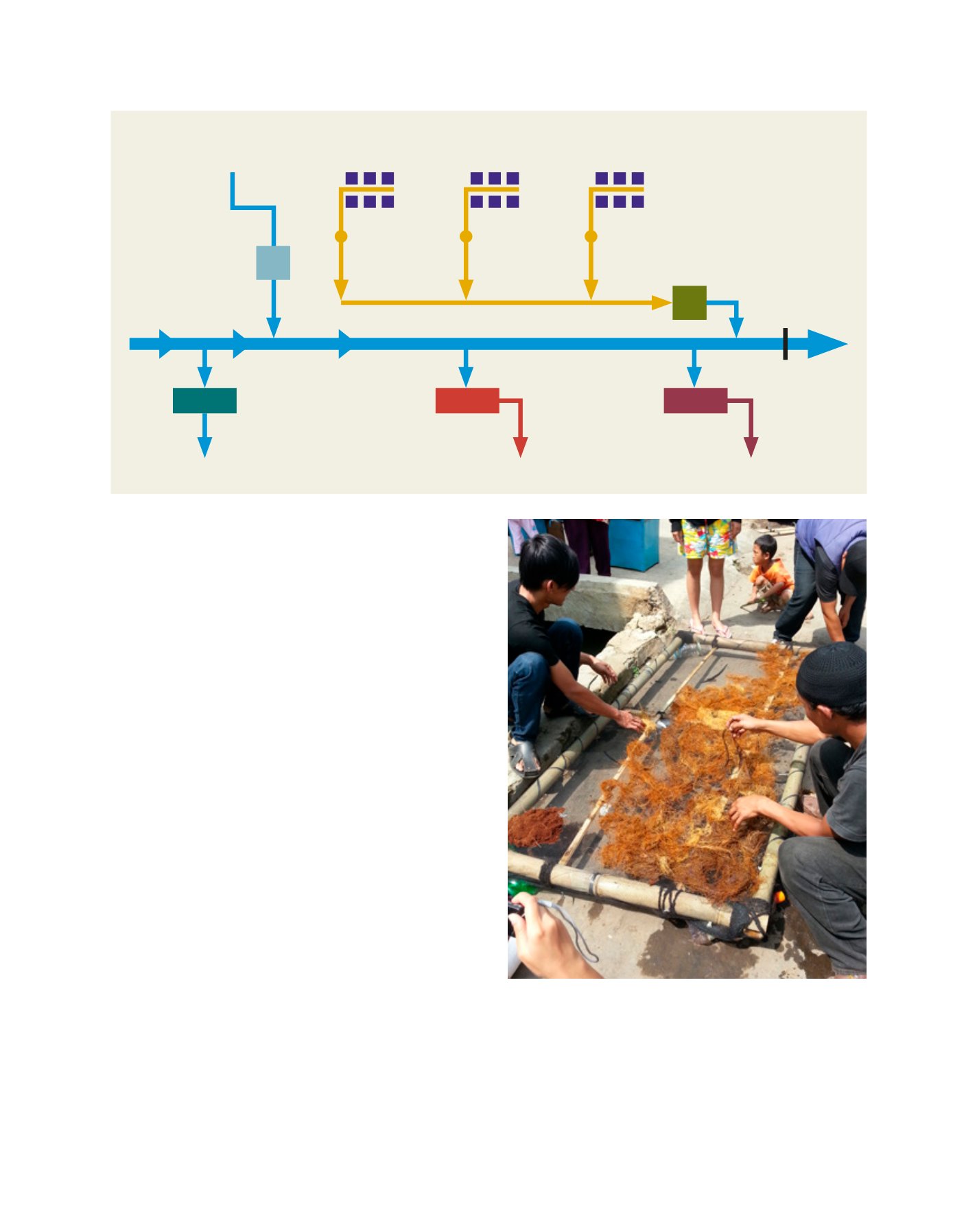

[
] 102
A B
et ter
W
or ld
gent aquatic plants growing on a buoyant mat are an innovative
tool for managing nutrients in ponds, lakes and slow-flowing
waters. The system allows plant roots to grow through a float-
ing mat and into the water beneath, providing a large surface
area for nutrient assimilation, growth of biofilms and the
entrapment of fine suspended particulates. By shading the
surface and buffering water turbulence FTWs can also promote
the settling of suspended algae and solids beneath the mats.
Because the plants are grown on floating media, this type
of wetland is more tolerant to fluctuations in the breadth and
depth of water. Plant roots that hang below the mats provide
a large surface area for biofilm growth and entrapment of
suspended particles. Because the plants are not rooted in the
sediment, they are forced to obtain nutrients directly from
the water column. In addition to their pollutant removal
capability, FTWs are also useful in terms of:
• The availability of resources.
• A high reduction of BOD and solids, but low reduction of
pathogens.
• Water biota, such as water hyacinth, grow rapidly and are
visually appealing.
• A low to moderate capital cost. Operating costs can be
offset by revenue.
• The potential for local job creation and income generation.
• Can be built and maintained with locally available materials.
The project saw the installation of FTWs measuring 1 x 2
metres, each made from 3-inch diameter PVC pipe and coarse
netting. The planting medium was cocopeat – a lightweight
substance with good water capillarity, made from coconut
husk – with a thickness of 5 cm. Kale, spinach and lettuce
were planted, each having a growing period of 4–5 weeks.
These plants have been widely used in wastewater treatment,
have economic value, and are familiar to the community.
The first step in project implementation was the involve-
ment of the Kampung Tanggulan community, facilitated by
meetings and other social events. Residents were very proac-
tive in providing input at the early stage, with enthusiasm
and a willingness to participate very much in evidence. They
gave approval for the project, and voiced their expectations
for its development.
The sedimentation and shallowing due to the erosion of
the river banks and bed has necessitated excavation work
Stormwater
Control tank
(sedimentation)
River
Flows to Cikapundung
Flows to Cikapundung
Flows to Cikapundung
Directly used
without treatment
Treatment
system
Water gate
Cleanout
Pipelines
Cleanout
Pipelines
Primary sewerage pipe
Primary sewerage pipe
Cleanout
Pipelines
House connections
House connections
House connections
Public toilet
Fish farm
Wastewater management system concept design
Construction of Floating Treatment Wetlands by the local community
Power plant
Image: IoT
Source: IoT
















